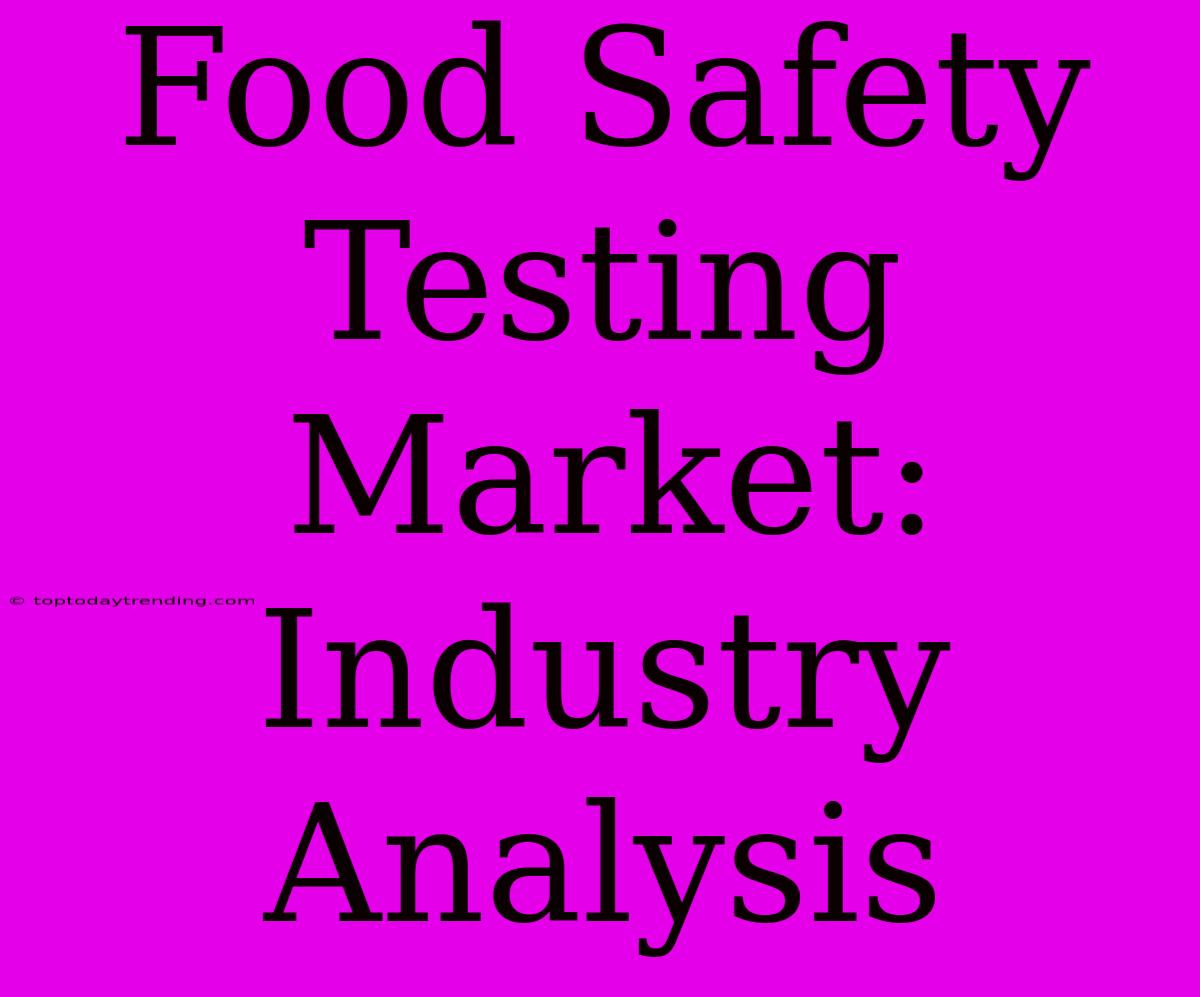The Food Safety Testing Market: A Comprehensive Industry Analysis
The food safety testing market is a dynamic and rapidly growing industry driven by increasing consumer awareness of foodborne illnesses, stringent government regulations, and the growing global demand for safe and high-quality food products. This comprehensive analysis will delve into the key aspects of the market, exploring its current state, growth drivers, key players, and future projections.
Market Overview
The food safety testing market encompasses a wide range of services, including:
- Microbiological testing: Detects the presence of harmful bacteria, viruses, and parasites in food products.
- Chemical analysis: Identifies the presence of contaminants, such as pesticides, heavy metals, and antibiotics.
- Allergen testing: Detects the presence of common food allergens, such as peanuts, gluten, and dairy.
- GMO testing: Identifies the presence of genetically modified organisms (GMOs) in food products.
- Nutritional analysis: Determines the nutritional content of food products.
The market is driven by a complex interplay of factors, which can be broadly categorized into:
Market Drivers
- Growing Consumer Awareness of Food Safety: Increased awareness of foodborne illnesses and their potential health risks has significantly boosted the demand for food safety testing.
- Stringent Government Regulations: Governments worldwide are implementing stricter regulations on food safety, requiring mandatory testing and certification.
- Rising Demand for Organic and Natural Foods: The growing popularity of organic and natural foods has driven the need for testing to ensure their authenticity and safety.
- Globalization of the Food Industry: The increasing international trade in food products requires robust food safety measures and testing.
- Technological Advancements: The development of new technologies, such as rapid testing methods, is enhancing the efficiency and accuracy of food safety testing.
Market Challenges
- Rising Costs of Testing: The complexity and sophistication of testing methods can make them expensive, posing a challenge for smaller food businesses.
- Lack of Standardization: The lack of global standardization in testing methods and regulations can create difficulties in ensuring consistent safety across international markets.
- Data Security Concerns: The growing use of digital platforms in food safety testing raises concerns about data privacy and security.
- Supply Chain Complexity: The intricate nature of modern food supply chains can make it difficult to trace the origin of food products and identify potential contamination sources.
Key Players
The food safety testing market is dominated by a few major players, including:
- Eurofins Scientific: A leading global provider of testing and analytical services, including food safety testing.
- SGS: A multinational inspection, verification, testing, and certification company with a strong presence in food safety testing.
- Intertek: A global provider of quality and safety solutions, including a comprehensive range of food safety testing services.
- Bureau Veritas: A global leader in testing, inspection, and certification services, with extensive expertise in food safety testing.
- ALS Limited: An Australian-based company offering a wide range of analytical testing services, including food safety testing.
Market Segmentation
The food safety testing market can be segmented based on:
- Testing Type: Microbiological, Chemical, Allergen, GMO, Nutritional
- Food Type: Meat, Dairy, Fruits and Vegetables, Seafood, Processed Foods
- End User: Food Manufacturers, Retailers, Food Service Companies, Government Agencies
Market Trends
- Increased Adoption of Rapid Testing Methods: Faster and more efficient testing methods are gaining popularity, allowing for quicker decision-making and reduced delays in the supply chain.
- Growth in Molecular Testing: Molecular techniques, such as PCR (polymerase chain reaction), are becoming increasingly prevalent in food safety testing due to their high sensitivity and specificity.
- Expansion of Online Testing Services: Digital platforms are emerging that offer remote food safety testing, simplifying the process for businesses and consumers.
Future Projections
The global food safety testing market is expected to experience significant growth in the coming years. The market is projected to reach $XXX billion by 202X, driven by factors such as rising consumer demand, increasing regulatory requirements, and the development of innovative testing technologies.
Conclusion
The food safety testing market is essential for ensuring the safety and quality of our food supply. As consumer awareness grows and regulatory frameworks evolve, the demand for reliable and accurate food safety testing services will continue to rise. The industry is expected to witness further innovation and technological advancements, shaping the future of food safety and contributing to a healthier and more secure food system.

